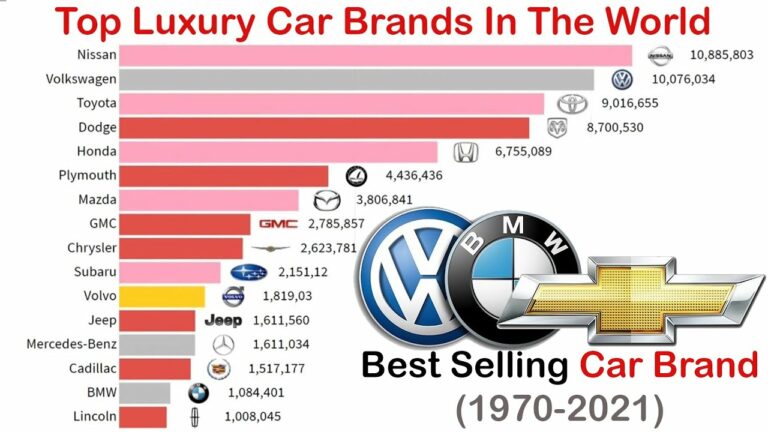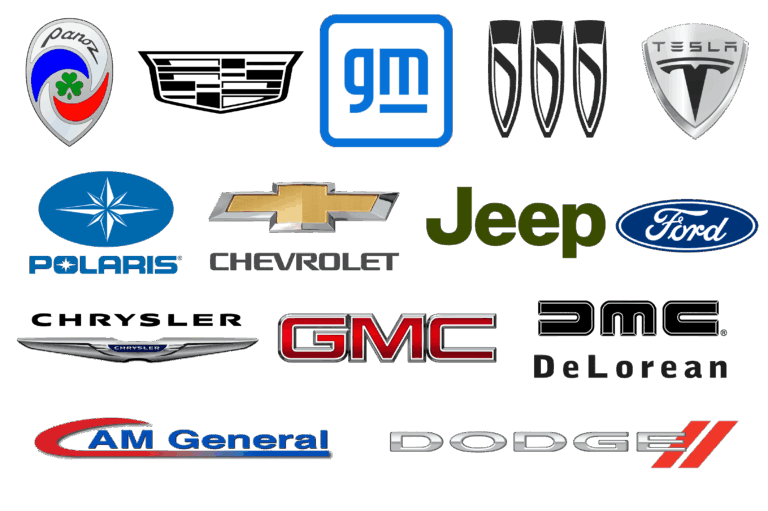Car Reliability Ratings By Brand: Your Definitive Guide to Informed Vehicle Choices
Car Reliability Ratings By Brand: Your Definitive Guide to Informed Vehicle Choices cars.truckstrend.com
The dream of a new car often comes with the unspoken hope of trouble-free ownership. No one wants to face unexpected breakdowns, costly repairs, or the inconvenience of a vehicle constantly in the shop. This is precisely where Car Reliability Ratings By Brand become invaluable. Far more than just a marketing buzzword, reliability ratings offer a data-driven glimpse into a vehicle’s long-term dependability, helping consumers make informed decisions that save money, reduce stress, and ensure a more satisfying ownership experience.
This comprehensive guide will delve into what car reliability ratings are, why they matter, how they are determined, and most importantly, how you can leverage them to select a brand and model that stands the test of time.
Car Reliability Ratings By Brand: Your Definitive Guide to Informed Vehicle Choices
What Are Car Reliability Ratings By Brand?
Car reliability ratings are essentially a predictive measure of how likely a vehicle, or a brand’s entire lineup, is to experience problems and require repairs over a given period, typically within the first few years of ownership. These ratings are derived from extensive surveys of thousands of actual car owners, tracking issues ranging from minor annoyances (like infotainment glitches) to major mechanical failures (like transmission problems or engine issues).
When we talk about "by brand," we’re looking at the aggregate performance of all vehicles produced by a specific manufacturer. A brand’s overall reliability score reflects the consistency of its engineering, manufacturing quality, and the robustness of its components across its model range. While individual models within a brand can vary, a high brand reliability rating suggests a strong corporate commitment to quality and durability.
Key aspects measured often include:
- Number of problems per 100 vehicles (PP100): Lower numbers indicate higher reliability.
- Severity of problems: Minor issues versus major breakdowns.
- Frequency of repairs: How often a vehicle needs attention.
- Cost of repairs: The financial burden associated with common issues.

Understanding these ratings empowers buyers to look beyond initial purchase price and features, focusing on the total cost of ownership and the peace of mind that comes with a dependable vehicle.
Why Do Car Reliability Ratings Matter?
The importance of car reliability ratings extends far beyond avoiding the inconvenience of a breakdown. They impact several critical aspects of vehicle ownership:

- Financial Savings: Unreliable cars translate directly into higher out-of-pocket expenses for repairs, maintenance beyond regular servicing, and potentially increased insurance premiums. A reliable car minimizes these unexpected costs.
- Peace of Mind: Knowing your vehicle is dependable reduces stress and anxiety about long trips, daily commutes, or unexpected emergencies.
- Safety: While direct safety ratings are separate (e.g., crash tests), a car that is mechanically sound and less prone to sudden failures inherently contributes to safer driving.
- Resale Value: Highly reliable brands and models tend to retain their value better in the used car market. Buyers are willing to pay a premium for a vehicle with a proven track record of dependability.
- Environmental Impact: Cars that last longer and require fewer major component replacements contribute less to waste and resource consumption.

In essence, reliability ratings are a crucial tool for long-term satisfaction and smart financial planning when it comes to vehicle ownership.
Sources and Methodologies for Reliability Data
Several reputable organizations and consumer advocacy groups compile and publish car reliability ratings. Each employs slightly different methodologies, but all generally rely on extensive owner feedback. Understanding these sources can help you interpret the data more effectively:
- Consumer Reports (CR): Widely regarded as a gold standard, CR collects data from hundreds of thousands of its members through annual surveys. They ask about 17 specific problem areas, from engine and transmission issues to electronics and paint. They use this data to predict the reliability of new models and rate used ones. CR’s scores are often presented on a 5-point scale or as a numerical score.
- J.D. Power: Known for its various automotive studies, J.D. Power conducts the Vehicle Dependability Study (VDS) which measures problems experienced by original owners of 3-year-old vehicles during the past 12 months. They also conduct an Initial Quality Study (IQS) for new vehicles (first 90 days of ownership). Their results are often presented as "problems per 100 vehicles (PP100)." Lower PP100 scores indicate higher quality/reliability.
- RepairPal: This platform uses a vast database of actual repair orders from certified repair shops to estimate the average annual repair costs, frequency of repairs, and severity of repairs for various makes and models. While not a direct reliability rating in the survey sense, it provides real-world cost implications of potential issues.
- TrueDelta: This service relies on a network of car owners who voluntarily track and report their repair experiences. It provides detailed, real-time reliability data broken down by specific model years and problem types.
- Owner Forums and Social Media: While not a structured rating source, these platforms can offer anecdotal insights into common issues, though they should be taken with a grain of salt due to potential bias or limited sample size.
Important Considerations When Interpreting Ratings:
- New vs. Used Vehicles: Some studies focus on new vehicle quality (e.g., J.D. Power IQS), while others focus on long-term dependability (e.g., J.D. Power VDS, CR). Ensure the data aligns with your purchase intent.
- Problem Severity: A minor glitch with an infotainment system might be counted the same as a major transmission issue in some scoring systems. Look for breakdowns of problem types if available.
- Sample Size: Larger sample sizes generally lead to more statistically significant and reliable data.
- Model Year Specificity: Reliability can vary significantly between different model years of the same car due to redesigns, new technologies, or manufacturing changes. Always check ratings for the specific year you’re considering.
- Regional Differences: Driving conditions, climate, and typical maintenance practices can subtly influence long-term reliability.
Factors Influencing Brand Reliability
Several underlying factors contribute to a brand’s overall reliability performance:
- Engineering & Design Philosophy: Brands with a focus on robust, proven components and simpler systems often fare better than those pushing complex, cutting-edge, untested technologies too quickly.
- Manufacturing Quality Control: Rigorous quality checks throughout the production process, from parts sourcing to final assembly, are paramount.
- Supply Chain Management: Consistent quality from suppliers of components (e.g., transmissions, electronics) directly impacts the final product.
- Platform Sharing: Using well-tested platforms across multiple models can improve reliability as issues are identified and resolved across a wider range of vehicles.
- Customer Service & Dealer Network: While not directly a reliability factor, a brand with a strong, responsive dealer network can quickly address and resolve issues, influencing owner satisfaction.
- Software and Electronics: In modern cars, software glitches and electronic failures are increasingly common sources of reported problems, even if they don’t leave you stranded. Brands with robust software development and testing tend to perform better here.
How to Use Car Reliability Ratings for Your Purchase Decision
Here’s a practical guide to leveraging reliability ratings:
- Start Broad, Then Narrow Down: Begin by looking at overall brand reliability ratings to identify top-performing manufacturers. This helps you create a shortlist.
- Focus on Specific Models and Model Years: Once you have a few brands in mind, dive into the reliability ratings for the exact model and model year you are considering. A brand might be highly reliable, but one particular model might have a known flaw.
- Cross-Reference Multiple Sources: Don’t rely on just one rating agency. Compare data from Consumer Reports, J.D. Power, and potentially RepairPal for a more complete picture.
- Consider Your Driving Needs: If you commute long distances, engine and transmission reliability will be paramount. If you’re tech-savvy, infotainment system reliability might be a higher priority.
- Factor in Maintenance Costs: Use resources like RepairPal to get an idea of average annual repair costs for specific models. A car might be reliable but expensive to fix if it does break down.
- Read Owner Reviews: Complement official ratings with real-world owner reviews on forums or review sites. These can offer qualitative insights into common frustrations or pleasant surprises.
- Check for Recalls: Before purchasing any used vehicle, check its VIN for open recalls. Recalls indicate known issues that need to be addressed by the manufacturer.
- Get a Pre-Purchase Inspection (PPI): Especially for used cars, a trusted mechanic’s inspection can uncover existing problems that might not be reflected in general reliability data.
Challenges and Nuances in Reliability Data
While invaluable, reliability ratings aren’t perfect. Keep these nuances in mind:
- Lag Time: Data collection and publication take time. The latest ratings might reflect models from the previous year or two.
- New Models: Brand-new models often lack extensive reliability data. Early adopters essentially become part of the data collection process.
- Low-Volume Models: Niche or low-selling models may have insufficient data for statistically significant ratings.
- Owner Bias: Some owners might report minor quirks as major problems, while others might tolerate significant issues without reporting them.
- Maintenance Habits: A car’s reliability is also heavily influenced by how well it’s maintained. Neglecting scheduled maintenance will inevitably lead to problems, regardless of brand reputation.
Illustrative Car Reliability Ratings By Brand (Example Data)
Below is an illustrative table providing hypothetical reliability scores and typical performance tiers for various brands, based on general industry perceptions and historical trends from major rating agencies. Please note: Actual rankings and scores fluctuate annually and across different reporting agencies. This table is for illustrative purposes only and should not be used as definitive current data. Always consult the latest reports from reputable sources for the most up-to-date information.
| Brand | Overall Reliability Score (Hypothetical) | Typical Ranking Tier (General Perception) | Common Strengths Noted (Historical) | Potential Areas for Improvement (Historical) |
|---|---|---|---|---|
| Toyota | 85-90/100 (Excellent) | Top Tier | Powertrain, Longevity, Low Repair Costs | Infotainment/Tech (historically) |
| Lexus | 88-92/100 (Exceptional) | Top Tier (Luxury Segment) | Luxury Features, Smoothness, Durability | Some tech complexity (newer models) |
| Honda | 80-85/100 (Very Good) | High Tier | Engines, Resale Value, Practicality | Some recent tech issues (e.g., infotainment) |
| Mazda | 82-87/100 (Excellent) | High Tier / Rising | Engaging Drive, Quality Interiors | Minor electronic glitches (historically) |
| Subaru | 75-80/100 (Good) | Mid-High Tier | AWD System, Safety, Durability | Head gasket (older models), some electronics |
| Hyundai | 78-83/100 (Very Good) | Mid-High Tier / Improving | Value, Warranty, Modern Features | Initial quality, some software issues |
| Kia | 77-82/100 (Very Good) | Mid-High Tier / Improving | Design, Warranty, Feature-Rich | Similar to Hyundai, some initial quality |
| BMW | 65-70/100 (Average) | Mid Tier | Driving Dynamics, Luxury, Performance | Electrical, Complex Systems, Higher Repair Costs |
| Mercedes-Benz | 60-65/100 (Below Average) | Mid-Low Tier | Luxury, Comfort, Status | Electronics, Air Suspension, High Repair Costs |
| Ford | 68-73/100 (Average) | Mid Tier | Trucks, SUVs, Sync System (improved) | Transmission issues (older models), infotainment |
| Chevrolet | 70-75/100 (Average) | Mid Tier | Trucks, Large SUVs, V8 Engines | Some infotainment, minor interior issues |
| Tesla | 45-55/100 (Below Average) | Lower Tier (Volatile) | Innovation, Performance, EV Technology | Panel gaps, build quality, software bugs |
| Land Rover | 35-45/100 (Poor) | Lowest Tier | Off-Road Capability, Luxury Design | Electrical, Suspension, Frequent Repairs |
Frequently Asked Questions (FAQ)
Q1: Are luxury cars always more reliable than economy cars?
A1: Not necessarily. While luxury brands often use high-quality materials, they also tend to incorporate more complex technology and intricate systems, which can introduce more potential points of failure. Many top-ranked reliable brands are mainstream or even economy brands (e.g., Toyota, Honda, Mazda).
Q2: How often are car reliability ratings updated?
A2: Most major organizations (like Consumer Reports and J.D. Power) update their annual reliability studies once a year, typically in the fall.
Q3: Does regular maintenance impact a car’s reliability rating?
A3: While the ratings reflect inherent design and manufacturing quality, regular and proper maintenance by the owner is crucial for a vehicle to achieve its maximum potential reliability. Neglecting maintenance will inevitably lead to premature wear and failures, regardless of the brand’s reputation.
Q4: Should I avoid a car with a low reliability rating?
A4: A low reliability rating is a red flag, but it doesn’t mean you must avoid the car. It means you should proceed with caution. Be prepared for potentially higher repair costs and more frequent issues. If you’re buying used, a thorough pre-purchase inspection is even more critical. Some buyers might accept lower reliability for other attributes like performance or unique design.
Q5: Do electric vehicles (EVs) have different reliability concerns than gasoline cars?
A5: Yes, they do. EVs eliminate many traditional powertrain components (engine, transmission, exhaust system), reducing potential mechanical failures in those areas. However, they introduce new components like battery packs, charging systems, and complex software. Early EV reliability issues have often centered around infotainment systems, body hardware, and charging components, rather than the core electric drivetrain.
Q6: What’s the difference between initial quality and long-term reliability?
A6: Initial quality (e.g., J.D. Power IQS) measures problems experienced in the first 90 days of ownership. It often reflects assembly quality and minor glitches. Long-term reliability (e.g., J.D. Power VDS, Consumer Reports) tracks problems over 3 years or more, giving a better indication of a vehicle’s durability and freedom from major mechanical issues over time. Focus on long-term reliability for a better sense of ownership costs.
Conclusion
Car reliability ratings by brand are an indispensable resource for anyone looking to purchase a vehicle. They transform anecdotal evidence into actionable data, allowing you to peek into the future ownership experience of a car. By understanding what these ratings represent, how they are compiled, and how to interpret them, you empower yourself to make a decision that prioritizes long-term financial health, peace of mind, and overall satisfaction. While no car is entirely immune to problems, choosing a brand and model with a strong reliability track record significantly increases your chances of a smooth, enjoyable, and cost-effective journey on the road. Always do your homework, cross-reference sources, and align your choice with your personal priorities.






